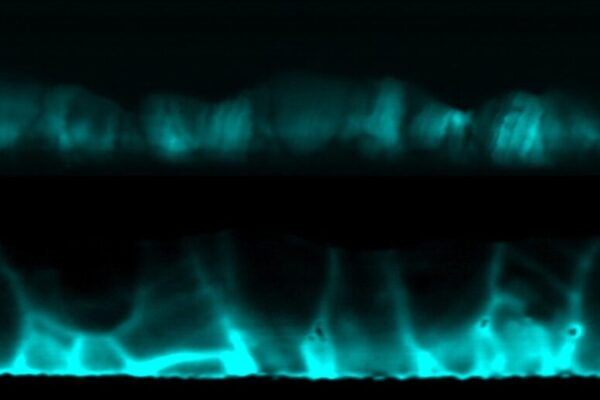
Thin-film solar cell efficiency mystery is solved
The research team used electron microscopy and computational simulations to explore the physical origins of the unexplained treatment process. The results are published in Physical Review Letters (PRL) in a paper entitled ‘Grain-Boundary-Enhanced Carrier Collection in CdTe Solar Cells’.
Thin-film CdTe solar cells are a potential rival to silicon-based photovoltaic systems because of their theoretically low cost per power output and ease of fabrication but their comparatively low historical efficiency in converting sunlight into energy, however, has limited the technology’s widespread use, especially for home systems.
Research in the 1980s showed that treating CdTe thin films with cadmium-chloride significantly raises the cell’s efficiency, but scientists have been unable to determine the underlying causes. ORNL’s Chen Li, first author on the PRL study, revealed that the answer lay in investigating the material at an atomic level.
“We knew that chlorine was responsible for this magical effect, but we needed to find out where it went in the material’s structure,” Li said. “Only by understanding the structure can we understand what’s wrong in this solar cell – why the efficiency is not high enough, and how can we push it further.”
By comparing the solar cells before and after chlorine treatment, the researchers realized that atom-scale grain boundaries were implicated in the enhanced performance. Grain boundaries are tiny defects that that normally act as roadblocks to efficiency, because they inhibit carrier collection which greatly reduces the solar cell power.

Cross-sectional electron beam-induced current maps show the difference in cadmium telluride solar cells before (pictured above) and after (below) cadmium
chloride treatment. The increased brightness after treatment indicates higher current collection at the grain boundaries
Using state of the art electron microscopy techniques to study the thin films’ structure and chemical composition after treatment, the researchers found that chlorine atoms replaced tellurium atoms within the grain boundaries. This atomic substitution creates local electric fields at the grain boundaries that boost the material’s photovoltaic performance instead of damaging it.
The research team’s finding, in addition to providing a long-awaited explanation, could be used to guide engineering of higher-efficiency CdTe solar cells.
Controlling the grain boundary structure, says Li, is a new direction that could help raise the cell efficiencies closer to the theoretical maximum of 32 percent light-to-energy conversion. Currently, the record CdTe cell efficiency is only 20.4 percent.
“We think that if all the grain boundaries in a thin film material could be aligned in same direction, it could improve cell efficiency even further,” suggested Li.
Oak Ridge National Laboratory is managed by UT-Battelle for the Department of Energy’s Office of Science.
Related articles and links:
www.ornl.gov
News articles:
CdTe solar cell grabs conversion efficiency world record
IBC solar cell achieves efficiency of 24.4 percent
Sunovia partners EPIR to break world record Open Circuit Voltage for CdTe thin film solar cells
 If you enjoyed this article, you will like the following ones: don't miss them by subscribing to :
eeNews on Google News
If you enjoyed this article, you will like the following ones: don't miss them by subscribing to :
eeNews on Google News



